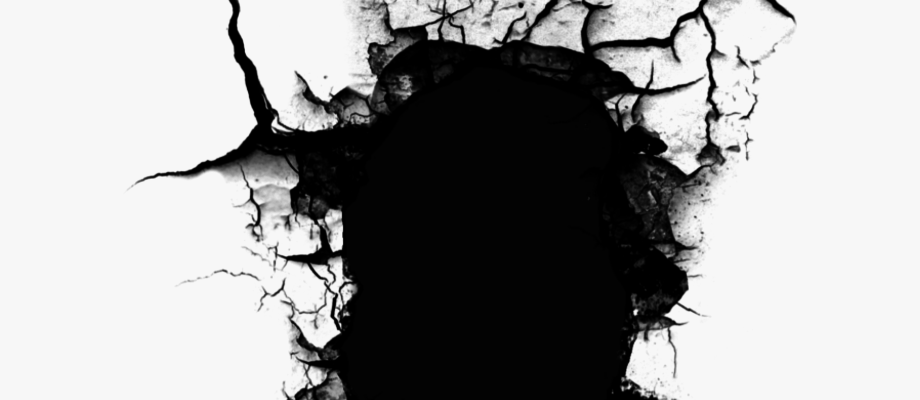Summary
The anal area is one of the body’s sensitive parts. When not properly maintained and cared for, it can become vulnerable to various forms of damage, such as developing a tear or injury known as an anal fissure.
An anal fissure is a small tear in the lining of the anus, often caused by trauma from passing hard stools, constipation, or straining during bowel movements. This condition can lead to discomfort, pain, and bleeding, especially during bowel movements. Proper hygiene and preventive care can significantly reduce the risk of developing an anal fissure and help maintain the health of this sensitive area.
Table of Contents
Symptoms of Anal Fissure
Anal fissures are accompanied by several symptoms that indicate the presence of a tear in the anus. Here are the common signs:
- Pain. Individuals with an anal fissure experience pain in the affected area, especially during bowel movements. This pain is often described as sharp and intense. In some cases, the fear of pain during bowel movements may lead to avoiding defecation, increasing the risk of further tears due to hardened stools.
- Blood in the stool. Bleeding is common with anal fissures, and the blood seen on the stool or toilet paper is typically bright red. This fresh blood is a result of the recent tear in the anal lining.
- Itching. Anal fissures can cause itching in the anal area. This itching may come and go or persist, adding to the discomfort.
- Dysuria. Some individuals with an anal fissure may experience dysuria, a feeling of discomfort while urinating. In certain cases, it may also lead to an increased frequency of urination.
Recognizing these symptoms can aid in identifying an anal fissure early on, allowing for timely treatment and reducing the risk of complications.
Types of Anal Fissure
Anal fissures can be classified based on their duration and the underlying cause. Here are the primary types:
- Acute anal fissure. An acute anal fissure is a fresh tear in the lining of the anus that typically occurs suddenly, often due to passing hard stools, constipation, or strain during bowel movements. Acute fissures are usually superficial and may heal on their own with proper care and conservative treatments, such as dietary adjustments and over-the-counter ointments.
- Chronic anal fissure. A chronic anal fissure is a tear that has not healed within six weeks. This type of fissure may develop scar tissue or skin tags around the tear, known as sentinel piles. Chronic fissures are deeper and more resistant to healing, often requiring medical intervention or, in some cases, surgical treatment to promote healing and prevent further tearing.
- Primary anal fissure. A primary anal fissure develops independently without any underlying medical condition. It is typically caused by trauma to the anal canal, such as straining, constipation, or the passage of large, hard stools.
- Secondary anal fissure. This type of fissure is linked to an underlying medical condition, such as Crohn’s disease, inflammatory bowel disease, or an infection. Secondary fissures are often more complex and may require treatment of the underlying condition to achieve full healing.
Understanding the type of anal fissure helps guide the treatment approach, with acute and primary fissures generally responding to conservative care and chronic or secondary fissures sometimes requiring more comprehensive management.
Diagnostic Procedures for Anal Fissure
Diagnosing an anal fissure involves a physical examination and may include specific tests to confirm the condition and identify underlying causes. Here are the common diagnostic procedures:
- Medical history and symptom review. The doctor will begin by asking about symptoms, recent bowel habits, dietary factors, and any prior conditions that may contribute to the anal fissure. Understanding the patient’s medical history helps in determining potential underlying causes.
- Physical examination. A physical examination of the anal area is often sufficient to identify an anal fissure. The doctor may carefully inspect the anal canal for visible tears, redness, or irritation. In many cases, this examination provides enough information for a diagnosis.
- Digital rectal exam. If further assessment is needed, the doctor may perform a digital rectal exam. This involves gently inserting a gloved, lubricated finger into the rectum to check for pain, tenderness, or abnormalities. This step is typically done cautiously to avoid aggravating the fissure.
- Anoscopy. An anoscope, a small, tube-like instrument with a light, may be used for a closer view of the anal canal and rectum. This procedure allows the doctor to examine the area more thoroughly and confirm the presence of a fissure.
- Colonoscopy or flexible sigmoidoscopy (if needed). In cases where there may be an underlying condition like Crohn’s disease, or if there are persistent or severe symptoms, the doctor may recommend a colonoscopy or sigmoidoscopy. These tests provide a detailed view of the lower gastrointestinal tract to check for inflammation, growths, or other conditions that may contribute to fissures.
These diagnostic steps allow for an accurate diagnosis of an anal fissure and help identify any underlying causes or conditions that may require additional treatment. Once diagnosed, appropriate care can be planned to promote healing and prevent recurrence.
Complications of Untreated Anal Fissure
If left untreated, an anal fissure can lead to several complications that may worsen discomfort and increase the need for more intensive medical intervention. Here are some potential complications:
- Chronic anal fissure. Untreated acute fissures may develop into chronic fissures, which are deeper and harder to heal. Chronic fissures can persist for over six weeks, often becoming more painful and requiring more complex treatments.
- Anal fistula. In some cases, a chronic fissure can lead to the formation of an anal fistula, an abnormal tunnel that connects the anal canal to the surrounding skin. Fistulas can cause additional pain, swelling, and may require surgical treatment to prevent infection.
- Infection and abscess formation. An open fissure can become infected, leading to the development of an abscess. Abscesses are painful, swollen collections of pus that can form around the fissure and require drainage or surgical removal.
- Scar tissue and sentinel pile formation. Chronic fissures can result in the buildup of scar tissue, forming a small skin tag known as a sentinel pile at the edge of the fissure. While generally harmless, these can cause additional irritation and make healing more difficult.
- Painful muscle spasms. Chronic fissures can lead to persistent spasms of the internal anal sphincter muscle. These spasms may worsen pain, reduce blood flow to the area, and delay the healing process, creating a cycle of pain and irritation.
- Increased risk of other anal or rectal conditions. Persistent fissures and ongoing inflammation in the anal area can make the tissues more vulnerable to other anal and rectal conditions, such as hemorrhoids.
These complications highlight the importance of seeking timely medical care for anal fissures. Early treatment can prevent the progression to chronic or severe conditions, reduce pain, and promote faster healing.
Causes of Anal Fissure

Anal fissures occur due to specific physical factors that directly damage the lining of the anus, leading to tears. Here are the primary causes:
- Passing large or hard stools. When stools are unusually large or hard, they can physically tear the sensitive lining of the anal canal as they pass, directly causing an anal fissure.
- Frequent bowel movements or irritation from diarrhea. Repeated bowel movements, especially during episodes of chronic diarrhea, cause friction and irritation in the anal canal, which can lead to fissures.
- Anal trauma. Any form of direct trauma to the anus, such as during anal intercourse without proper lubrication, can cause the tissue to tear and result in an anal fissure.
- Increased pressure from childbirth. During childbirth, especially vaginal delivery, the strain on the pelvic and anal muscles can lead to tears in the anal lining.
- Spasms in the anal sphincter muscle. The anal sphincter muscle may undergo involuntary spasms, exerting excessive pressure on the anus. These spasms can cause tears or worsen existing fissures by delaying healing.
- Inflammation and ulceration from gastrointestinal conditions. Conditions like Crohn’s disease and ulcerative colitis cause chronic inflammation and ulceration in the digestive tract, making the anal lining more susceptible to tearing.
These direct causes of anal fissures involve physical stress or damage to the anal canal, resulting in tears that lead to discomfort and pain. Addressing these causes can promote effective healing and prevent further injury to the area.
Prevention of Anal Fissure

Preventing anal fissures involves maintaining healthy bowel habits and reducing strain on the anal area. Here are some effective measures to consider:
- Keep stools soft. Consuming fiber-rich foods like fruits, vegetables, and whole grains, along with plenty of fluids, especially water, helps keep stools soft and easier to pass, reducing strain on the anus.
- Exercise regularly. Consistent physical activity promotes healthy digestion and regular bowel movements, which can decrease the risk of hard stools and strain that may lead to fissures.
- Avoid excessive straining. Refrain from straining or sitting on the toilet for extended periods, as this can put pressure on the anal muscles and increase the likelihood of a tear.
- Respond promptly to the urge to defecate. Delaying bowel movements can cause stool to harden and become larger, increasing the risk of trauma to the anal lining when eventually passed.
- Avoid foods with sharp or hard fragments. Some foods, like nuts and popcorn, can remain partially undigested, and their sharp fragments may scratch or irritate the anal canal. Chewing food thoroughly and choosing softer options can help prevent this.
- Use soft wipes. For individuals prone to fissures, using soft, moist wipes instead of rough toilet paper can minimize irritation. Look for fragrance-free, alcohol-free wipes to avoid additional irritation.
- Change infants’ diapers frequently. Frequent diaper changes for babies, especially when soiled, reduce irritation and help prevent the development of anal fissures in infants.
Following these steps can help maintain the health of the anal area and reduce the risk of painful fissures. Regular bowel habits and gentle care are essential to protecting this sensitive part of the body.
Risk Factors for Anal Fissure
Certain factors increase the likelihood of developing an anal fissure. Here are some of the key risk factors:
- Age. Anal fissures can affect individuals of any age, but they are more common in young children and middle-aged adults. Children may experience them due to constipation, while adults face increased risk due to other lifestyle and health factors.
- Constipation. Straining during bowel movements due to constipation significantly raises the risk of tearing the anal lining, leading to fissures.
- Childbirth. Women are at higher risk of developing anal fissures during and after childbirth due to the strain on pelvic and anal muscles involved in delivery.
- Anal intercourse. This type of sexual activity, especially without adequate lubrication, can increase the risk of trauma to the anal area, resulting in tears or fissures.
- Crohn’s disease. This inflammatory bowel condition causes chronic inflammation in the intestines, which can make the anal canal more susceptible to tears during bowel movements.
Understanding these risk factors can aid in taking preventive steps to protect the health of the anal area, especially for individuals who may be more susceptible to developing fissures.
Anal Fissure FAQs
Anal fissures can be uncomfortable and disruptive, leading many to wonder about causes, treatments, and prevention methods. Here are some frequently asked questions to help you understand anal fissures and manage the condition effectively.
- What is an anal fissure?
An anal fissure is a small tear or cut in the lining of the anus, typically caused by trauma from passing large or hard stools, constipation, or straining during bowel movements. This tear can lead to pain, bleeding, and discomfort. - What causes an anal fissure?
Common causes include constipation, chronic diarrhea, childbirth, and trauma from straining or hard stools. Certain medical conditions, such as Crohn’s disease, can also increase susceptibility to anal fissures. - What are the symptoms of an anal fissure?
Symptoms include sharp pain during and after bowel movements, bright red blood on the stool or toilet paper, itching or irritation around the anus, and, in some cases, a small lump or skin tag near the fissure. - How is an anal fissure diagnosed?
A doctor can usually diagnose an anal fissure through a physical examination. In some cases, an anoscopy or additional tests like a colonoscopy may be performed to rule out other conditions or assess chronic fissures. - Can anal fissures heal on their own?
Yes, acute anal fissures often heal within a few weeks with proper self-care, including a high-fiber diet, increased water intake, and stool softeners. However, chronic fissures may require medical treatment. - What are the treatment options for an anal fissure?
Treatments include dietary adjustments, warm sitz baths, topical medications, and in some cases, medications to relax the anal sphincter muscle. Chronic fissures may require surgical intervention if conservative treatments are ineffective. - Are anal fissures a serious condition?
While anal fissures are not typically life-threatening, they can cause significant pain and discomfort. If left untreated, they may lead to complications such as infection, abscess formation, or chronic fissures. - How can I prevent anal fissures?
Preventive measures include eating a high-fiber diet, drinking plenty of water, avoiding straining during bowel movements, and responding promptly to the urge to defecate to avoid hard stools. - Is an anal fissure the same as hemorrhoids?
No, anal fissures and hemorrhoids are different conditions. Hemorrhoids are swollen veins in the rectal area, while an anal fissure is a tear in the anal lining. However, both can cause pain, itching, and bleeding. - When should I see a doctor for an anal fissure?
Seek medical attention if the pain is severe, if symptoms persist for more than a few weeks, if there is excessive bleeding, or if there are additional symptoms like fever or swelling, which may indicate an infection.


